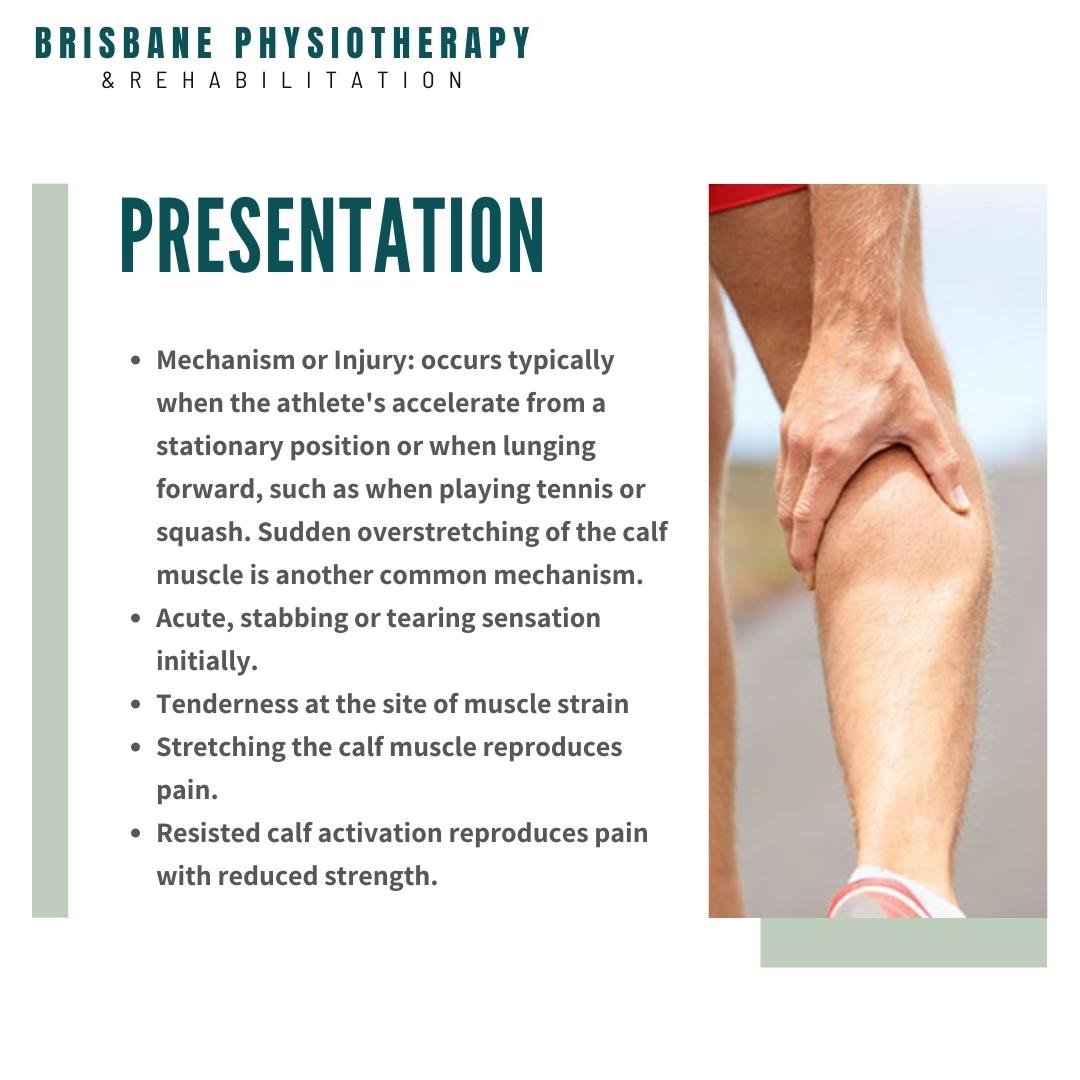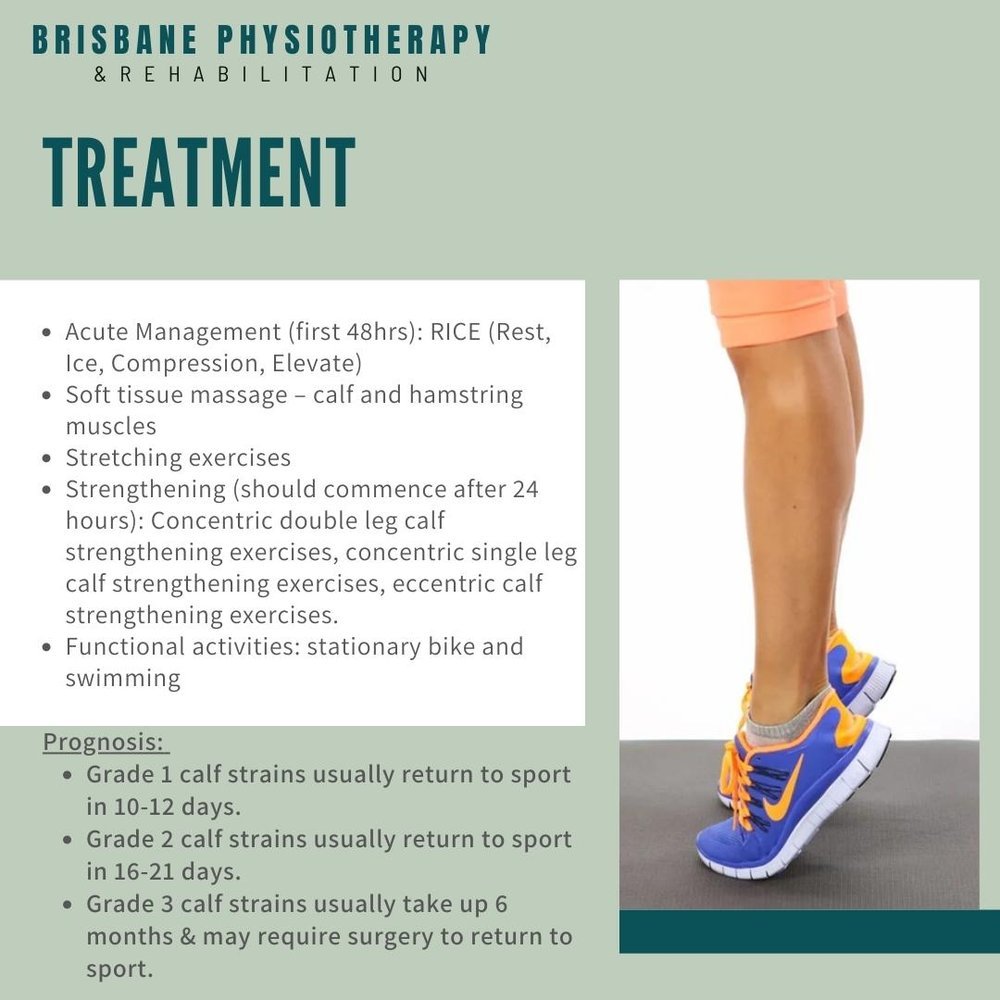What is a Calf Strain?
Understanding your injury – Brisbane Physiotherapy Edition.
Overview of Calf Strain:
Description
- Calf strain is a common muscle injury and if not managed appropriately there is a risk of re-injury and prolonged recovery.
- Calf muscle strain injuries occur commonly in sports involving high-speed running or increased volumes of running load, acceleration and deceleration as well as during fatiguing conditions of play or performance.
- The calf consists of three muscles:
o Gastrocnemius
o Soleus
o Plantaris
- Muscle strains commonly occur in the gastrocnemius as it is a bi-articular muscle (attaches across two joints). The knee and the ankle.
Presentation
- Mechanism or Injury occurs typically when the athlete attempts to accelerate from a stationary position or when lunging forward, such as when playing tennis or squash. Sudden overstretching of the calf muscle such as when an athlete runs onto a curb and the ankle drops suddenly is another common mechanism.
- Acute, stabbing or tearing sensation initially.
- Tenderness at the site of muscle strain
- Stretching the calf muscle reproduces pain.
- Resisted calf activation reproduces pain with reduced strength.
Calf Strain Management
Treatment
- Acute Management (first 48hrs): RICE (Rest, Ice, Compression, Elevate)
- Soft tissue massage – calf and hamstring muscles
- Stretching
Gentle stretching of the gastrocnemius muscle to the level of feeling of tightness.
- Strengthening (should commence after 24 hours)
Concentric double leg calf strengthening exercises à concentric single leg calf strengthening exercises with gradual addition of weights à eccentric calf strengthening exercises gradually increasing speed then adding weights.
- Functional activities: stationary bike and swimming
Prognosis:
- Grade 1 calf strains usually return to sport in 10-12 days.
- Grade 2 calf strains usually return to sport in 16-21 days.
- Grade 3 calf strains usually take 6 months after surgery to return to sport.



